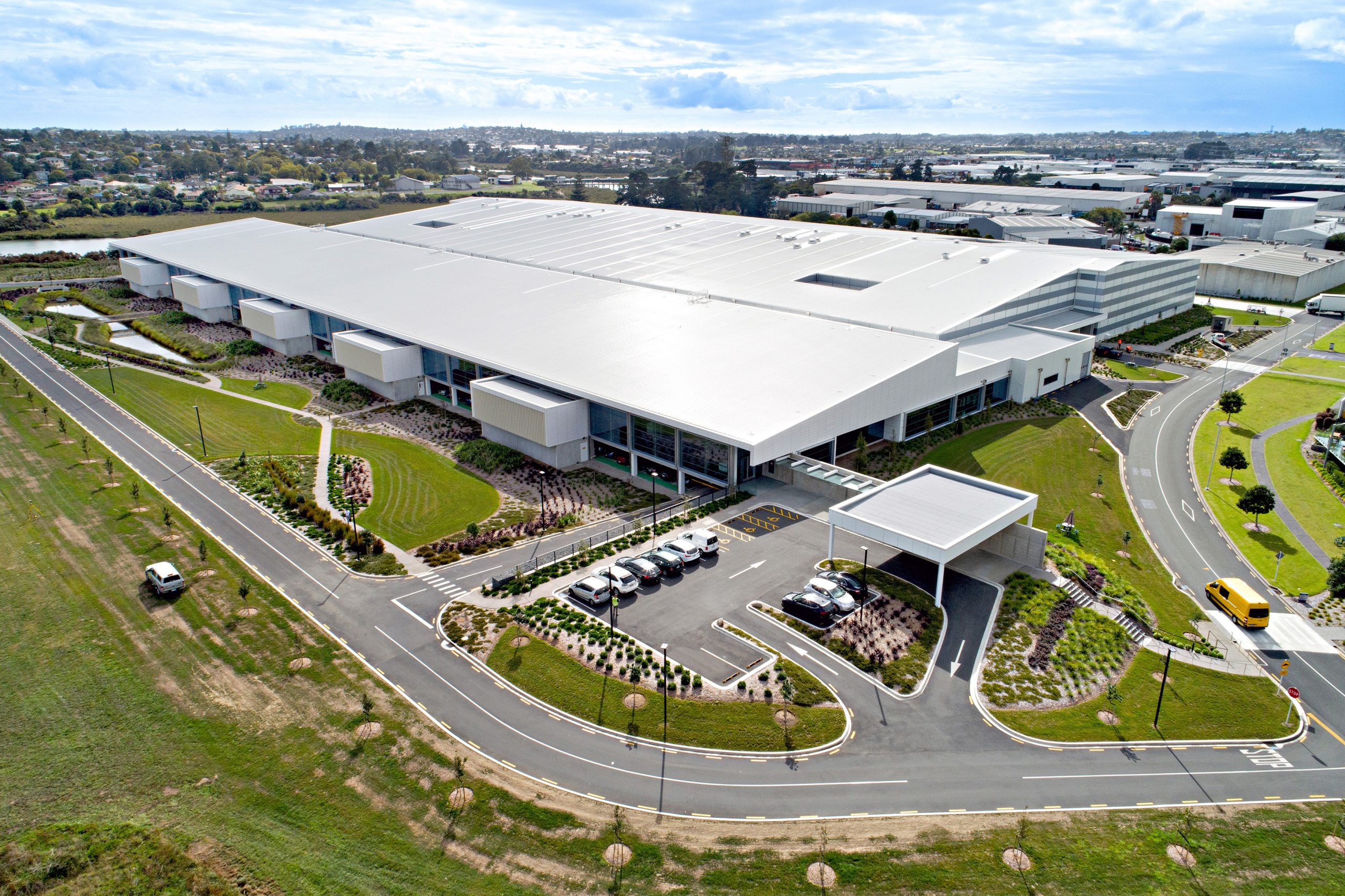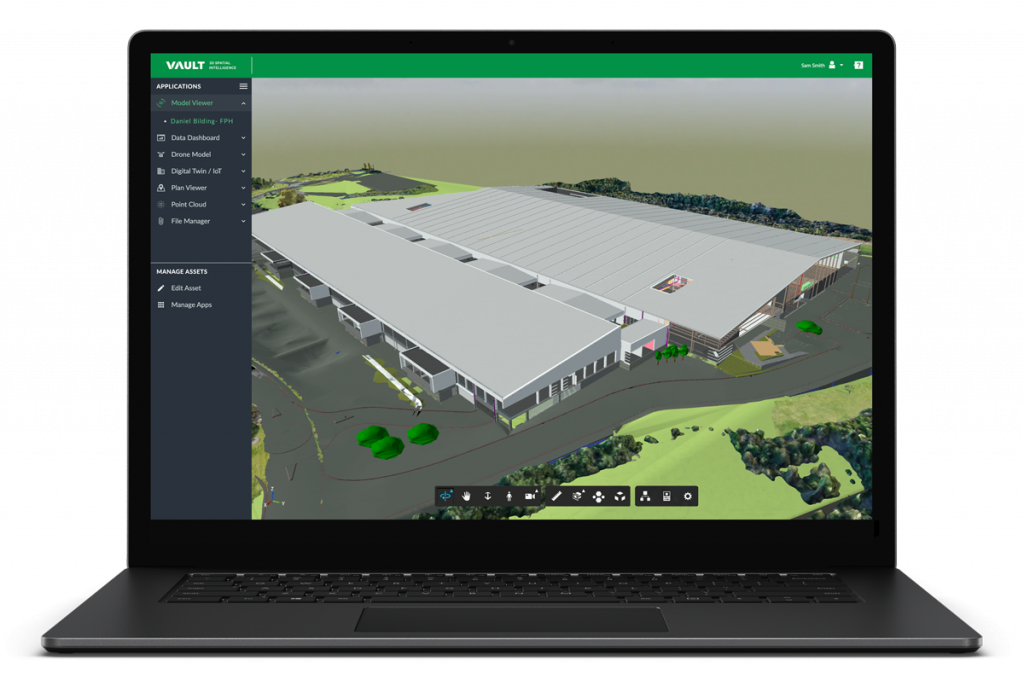Bringing a host of contractors, overseers and other technical experts together efficiently on a large construction project is no mean feat. Even using digital models, not everyone is on the same digital “page” – as that “all important” single source of federated data is still missing. This silo effect can lead to expensive rework and delays. With its Azure-based Vault (3D Data Intelligence Hub) asBuilt can deploy the equivalent of a pixel-perfect digital twin of a built asset. By uniting disparate data sources in one place, asBuilt is accelerating the next generation of Building Information Management (BIM) with customers like Fisher & Paykel Healthcare. By taking a digital approach to building, they’re breaking down construction silos, making digital information flow more efficient and saving time and money in the process.
As one of the world’s leading designers and manufacturers of medical devices in the respiratory care field (such as CPAP solutions for sleep apnea and a continuum of care options for hospital respiratory care) Fisher and Paykel Healthcare (F&P Healthcare) knows the importance of accuracy in design. Everything is purposefully crafted to deliver better care and patient outcomes at all touch-points, so detail is in its corporate DNA.
To comply with strict global standards, it has a controlled working environment in its manufacturing and warehouse spaces, featuring finely calibrated sensors that monitor everything from temperature to humidity and air pressure to ensure every item is created and stored under exactly the right conditions.
So when it commissioned the design and construction of the Daniell Building at its East Tamaki, Auckland campus, F&P Healthcare naturally wanted to use the latest technology to get the development just right. Together with external project manager RCP and architects Warren and Mahoney, F&P Healthcare designed a BIM (Building Information Management) model that turned the standard two-dimensional design drawings into a digital 3D version.
The potential for this kind of technology is huge – not only can every contractor visualise much better where to install equipment in a 3D space, but every member of the project can also update the shared digital model as they go, so everyone knows exactly which stage construction is at and has the visual evidence to prove it.
There was just one snag. Despite the digital models, the level of accuracy being achieved needed further improvement.
“Even though BIM has been around a long time, many in construction fall back on what they know, which is a two-dimensional drawing. You can’t just equip someone used to working on paper with a tablet. There needs to be a change management process first, along with independent peer review to ensure everyone is using the model correctly,” explains Dave Cuff, General Manager, Global Facilities and Infrastructure at F&P Healthcare.
“There are very tight margins in construction. Re-work, putting things back in the right location, costs time and money to do, so it’s in everyone’s best interests to get it right first time.”
The asBuilt team joined the Daniell Building project to provide expert peer review. The results are not only saving a lot of time and money (and headaches), stakeholder buy-in has improved and F&P Healthcare is now managing its whole construction programme via just one digital platform.
A digital twin with an eagle eye
Using laser scanners to create point cloud models, drone imagery and more, the asBuilt team created the equivalent of a digital twin of the Daniell Building – a three-dimensional, photo-real version – mapping what was there already, against the BIM plans.
Sure enough, the digital twin showed where there were differences between what was in the BIM model and what had been built – which goes to show the importance and value of the digitisation process.
“Even with digital BIM files, people often work in silos. Files are stored separately, or not digitised at all, and that leads to things not being put in the right place,” says Andre Koolen, director at RCP.
People were also borrowing operating manuals from the bookshelf – information on everything from the right technical specifications and installation processes to start-up instructions for the equipment – and misshelving or forgetting to return them. So asBuilt created a suite of digitised operating manuals too.
Everything was stored in one centralised place – the asBuilt Vault, a cloud-based 3D spatial intelligence platform built in Microsoft Azure.
“Our experience showed us the team needed to have a hierarchy of assets, and provide everyone with clear guidelines for these assets, as well as have a single shared model. We uploaded the digital twin to the Vault, along with the digital manuals. Then we built in contractual frameworks that required the designers and contractors to upload relevant information at certain steps, so nothing would get missed during the build process,” says David Burton, Chief Executive of asBuilt.
With Vault providing a “single point of truth”, it made working through the revisions a lot easier. So much easier, in fact, F&P Healthcare brought asBuilt in at pre-construction stage for its next major project…
From managing one building to sixty
Building Five, the latest building at the East Tamaki site, will be even bigger than the last. While there’s no physical building to scan just yet, asBuilt created a walkthrough digital version based on the BIM model.
“Unlike the Minecraft-style blocks that make up typical 3D models, this is a hyper-real taste of the finished product, making it much easier for people to visualise,” Andre says.
Not only is the Vault model used for all site meetings and shared with all contractors, ensuring everyone is on the same page (and in real time), F&P Healthcare has also been using it to drive buy-in among its own people during Expo days, just as they did at the opening of the Daniell Building, which coincided with F&P Healthcare’s 50th anniversary. At these events, asBuilt put the “Immersion Lab”, its 7m-diameter, 360-degree theatre, on-site. At just one event, 3,000 staff got an immersive experience inside the digital model, from behind the scenes in the plant room or the chillers, without the need for a headset.
“It’s a really great way of visualising different pieces of work and checking where things are at. In fact, we now have three large construction projects and sixty-odd smaller refits on the go, and we can now track them all and make sure things are being done compliantly,” says F&P Healthcare’s Dave Cuff.
While training is ongoing, Andre says the use of the Vault is helping reduce costs by cutting down on the need to request further information, and ensuring the model is more accurately designed from the beginning.
“If the model isn’t designed accurately at the design phase, contractors can’t price the job correctly, which creates risks right down the line. The potential long-term gain for F&P Healthcare makes this a very powerful tool,” he says.
And having a digital operating manual saves a lot of time looking for a stray book, says Dave.
“Digitising everything and storing it in the Vault has really helped us hold people accountable, and see which outstanding items we need resolution on. While we’re still on the journey, it’s a far more realistic option than anything we’ve had before, and a great tool to have conversations and pick errors up,” he adds.
He’s also delighted F&P Healthcare is finally in control of its own data.
“As both the developer and the occupier of our campus, which is comparable to a university in size, we have significant costs invested in building and maintenance, so oversight and control are important. This solution gives us that – we own our own data, while working with credible companies who are helping us manage it. There’s no need to ask someone else to access it for us,” he says.
asBuilt is also overseeing the centralised contracts and documentation. With the introduction of its other key solution, PayLab, it has helped to streamline the payments process for consultants and contractors.
Adds Briar Sutherland, Project Manager at RCP: “The efficiency of this approach for managing contractor payments has been a breath of fresh air. We save so much time, as do the contractors, and importantly we are confident in complying with the Construction Contracts Act via the digitised PayLab claim and certification process.”
The better way to change a lightbulb
The real promise of these digital replicas is not just their ability to be used in the design and construction process, but in the management of facilities once they’re built.
Or as Dave Cuff explains it: “If you have a room that requires a lightbulb to be changed, the model can tell you ahead of time where the bulb is and which type it is, so there’s no delay. Typically, someone has to be called out once it goes, check the bulb, then go and buy the right one, but this will save so much time. Where we’re going with maintenance is to use data more intelligently.”
One day he plans to heatmap each building to monitor the flow of people, so F&P Healthcare can forecast when things like air conditioner filters are likely to need replacing. Using an IoT layer the model can also store information against each asset with its servicing or replacement dates, flagging when these are coming up.
Long into the future, Dave is looking forward to using the models to guide further renovations. With a digital twin, he can now tell immediately if that wall people want to knock down is a firewall and can’t be changed.
The good news is that as Azure cloud storage is virtually limitless, there’s the potential for so much data to be stored and accessed easily from the Vault, as Matt Bostwick, Partner Director at Microsoft New Zealand, explains:
“Wellington recently developed its own digital twin. Imagine the efficiencies if every city and every developer was using smart construction tools and digital twins to de-risk projects from the beginning, to help get much-needed homes and infrastructure moving faster and reduce costs. We’re super-excited about the way asBuilt’s pioneering work is advancing the whole construction sector in Aotearoa.”
David Burton says he is looking forward to helping more customers benefit from digital tools.
“Construction is an industry much in need of digitisation. In fact, it is the second least digitised of any industry and yet it represents 10 per cent of the global workforce. It is also the biggest industrial contributor to waste, responsible for a giant 39 per cent of industry emissions, while also being an incredibly stressful environment to work in, as we see evidenced by far too many sad headlines in the paper. It is awesome to be able to work with visionary organisations like F&P Healthcare, who recognise the value of advancing and de-risking construction in this way, and now embrace ‘digital as a best-practice’.“


